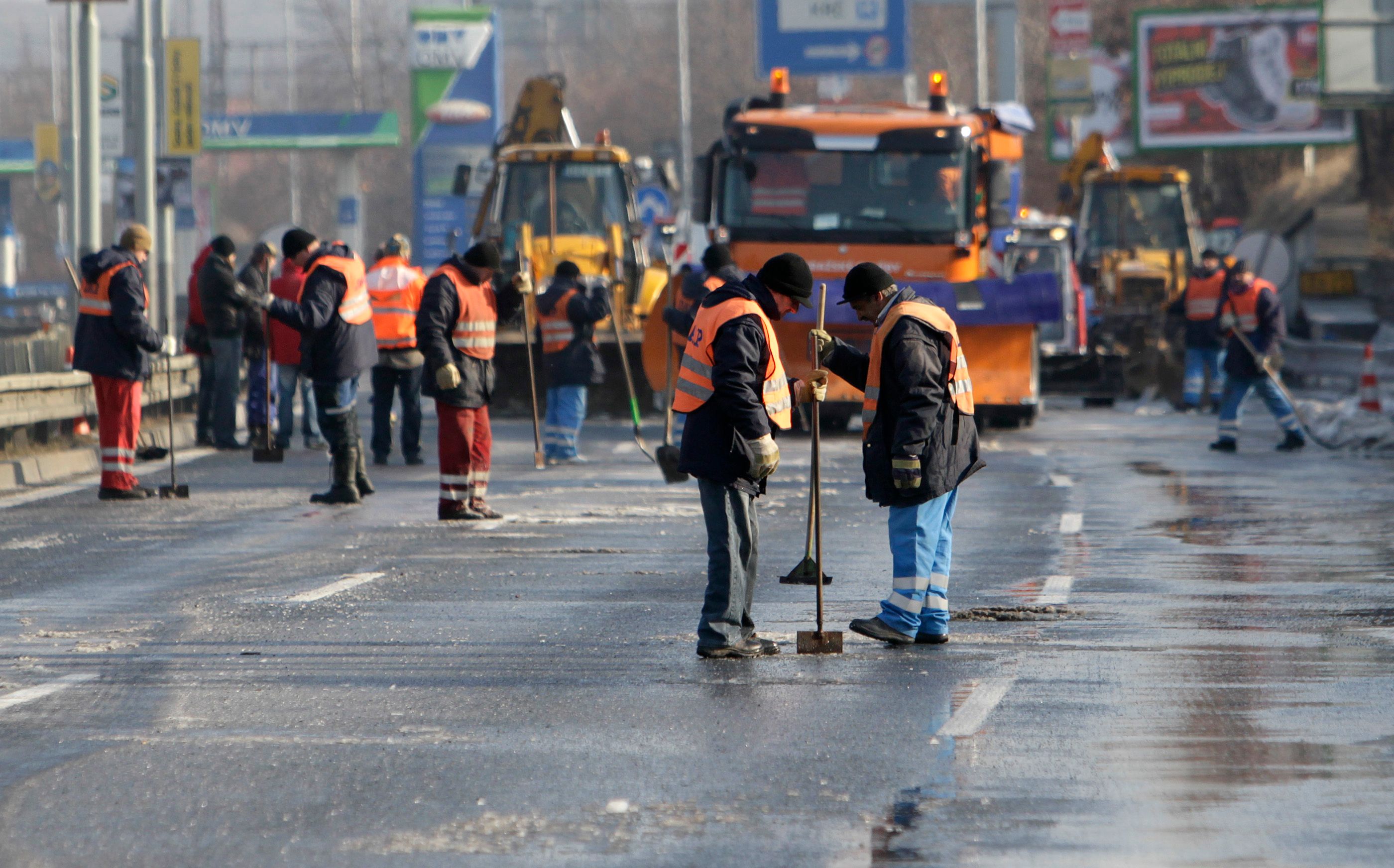The Czech National Investment Plan for 2020-2050: Plans for Infrastructure Development

NIP Assumptions
The plan is a legally non-binding list of current and future investments. It contains 20,000 projects, mainly connected with infrastructure, as well as others in the fields of education, culture, healthcare and foreign service (such as plans to modernise diplomatic missions, including the renovation of the Czech embassy in Warsaw). The NPI is part of the government’s promotional campaign “Czech Republic: The Country for the Future.” Other elements of the plan are the ANO and Czech Social Democratic Party (ČSSD) government’s Innovation Strategy for 2019 to 2030 and the strategic document Digital Czech Republic, adopted in February and April 2019, respectively. In January, Babiš’ cabinet adopted the Economic Strategy until 2030.
The government estimates NIP investment costs at 8 trillion korona (almost €320 billion). According to the draft budget act for 2020, adopted by the Czech parliament in December 2019, investments implemented this year will cost almost €6 billion. This means that the Czech Republic will have increased its expenditure by approximately €1 billion year on year. To improve the implementation of the investment, ANO forced the creation of the National Development Fund, a joint project involving the state and the four largest commercial banks in the Czech Re The NIP plan is to be implemented through a public-private partnership. The Czech government also plans to obtain larger subsidies from the EU, including loans from the European Investment Bank and support for enterprises from the European Investment Fund. However, the document lacks the indication of sources of financing for individual projects, and the exact schedule for their implementation.
Over 77% of projects relate to transport infrastructure. This is intended to show the government's determination to develop the Czech road network, which, according to the World Economic Forum, is among the worst in the EU. 130 km of motorways have entered service in the Czech Republic since 2011, less than in the 1990s or in the first decade of this century. Moreover, the delays in modernisation of, for example, the section of the longest Czech D1 motorway connecting Prague, Brno and Ostrava with the Polish A1 highway, caused public protests. The implementation of the NPI objectives, including the plan to put into service 110 km of new motorways by 2021, is set to reduce long-standing negligence and social discontent. In railway infrastructure, the government emphasises high-speed line connections, along with the modernisation and expansion of connections. This applies mainly to all routes between country’s three biggest cities (Prague, Brno and Ostrava). The NPI includes the extension of regional infrastructure based on the trans-European corridors of the Trans-European Transport Network (TEN-T) through the Czech Re These are the Baltic-Adriatic, the Orient/East-Med, and the Rhine-Danube. Expansion does not include the rail network included in the programme of the ongoing Czech presidency of the Visegrad Group.
The NIP assumes increasing the share of nuclear power in the energy mix. This is to be achieved by investments in blocks at two nuclear power plants: Dukovany and Temelín. In the first case, the tender procedure is underway, with 2029 as the deadline for starting investment.
The plan takes into account current economic and technological trends, such as industry 4.0. Support for innovation with the participation of industry in creating gross added value of 30% (compared to the EU average of 19%), which is intended to increase its competitiveness.
Babiš’s Goals
The NIP is part of the ANO campaign to project an image as the most investment-friendly among political parties. The document is intended to show that Babiš’ cabinet has strategic development plans for all Czech regions. The overwhelming majority of programme initiatives come from ministries led by ANO. The dominant position of this party is also evidenced by the fact that ČSSD's proposal for higher bank taxation to finance the NPI was rejected. In addition, Karel Havlíček, the deputy prime minister, minister of industry and trade, and since January this year, the transport minister (nominated by ANO), is also responsible for coordinating NPI projects.
The plan is set to counteract the economic slowdown, which the European Commission forecasts for the Czech Re GDP growth, which was 3% in 2018 and 2.5% in 2019, is expected to be 2.2% in 2020 and 2.1% in 2021. Babiš assumes that, in the event of reduced investment from the private sector, the state should contribute to generating economic growth through, among other things, NIP implementation.
Czech Regional Development Plans
Infrastructure investments, such as the modernisation of the railway lines between the Czech Republic and Slovakia, and the completion of the D52 motorway to the Austrian border on the route from Prague and Brno to Vienna, are to connect the Czech Republic with its neighbours more effectively. Better connections with Poland are to be ensured by completing the D11 motorway to Lubawka (the beginning of the investment is planned for 2023) and connecting it with the planned section of the S3 road on the Polish side. The plan also envisages completing the D48 road (which has been under construction since 2017), which connects Cieszyn Silesia with the D1 highway.
Construction of a Danube-Oder-Elbe waterway, which has strong political support from President Miloš Zeman is included in the NIP. However, this does not mean that it will be built soon. The investment was conditional on economic profitability and compliance with the assumptions of the nature protection programme “Natura 2000.” This means that the waterway is not one of the leading initiatives in the NPI (although it was on the list of priorities of the Three Seas Initiative from the June 2019 Ljubljana summit). Connecting the Ostrava region and Kędzierzyn-Koźle via the waterway will be the first step towards implementing this investment, which aims to enable the flow of goods from the highly industrialised Czech region to the inland ports of Germany and the Baltic Sea.
Conclusions and Recommendations
The NIP confirms the evolution of Babiš’ economic programme, away from emphasising free market solutions and towards greater state participation in the economy. Although the plan will undergo modifications, it gives a glimpse of the directions of the state’s long-term development plans. Thus, it provides information for the Czech Republic’s neighbours, including Poland, about how to synchronise cross-border investments. For companies from the construction and transport industries, including Polish businesses, the NIP is also an opportunity to participate in investments planned by the Czech government.
The Czech Republic and Poland share a desire to obtain the largest possible share of cohesion funds under the MFF for investment. Both countries are in favour of maintaining the freedom of EU Member States to spend funds. In addition, the Czech Republic and Poland are party to a joint declaration by the friends of cohesion policy (made in Prague, in November 2019) emphasising investments that would bring their economies closer to the low-carbon model.
For the Czech Republic, it is Visegrad cooperation rather than the Three Seas Initiative that plays a greater role in planning the development of regional infrastructure. This is confirmed by the content of the NPI, which does not correspond with documents of the Three Seas Initiative, except for plans to build a Danube-Oder-Elbe water corridor. However, this investment should be subject to further consultations at various levels. The Polish V4 presidency, due to begin in July, may contribute to the development of connections on the north-south axis. This will happen when the V4 programme assumptions on infrastructure issues are expanded. In addition to continuing work on the high-speed rail line, the Polish presidency should focus on cross-border road connections. Their expansion and modernisation will contribute to increasing the quality of transport in Central Europe.


